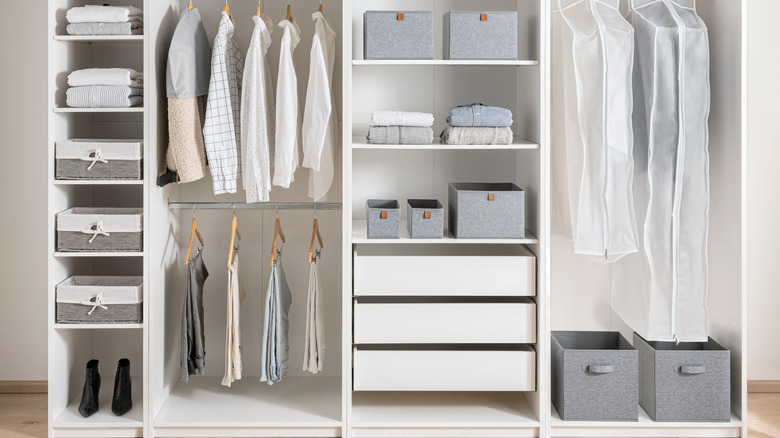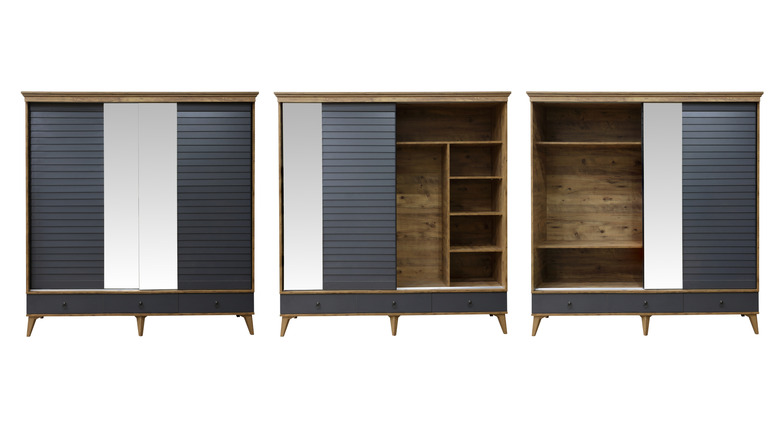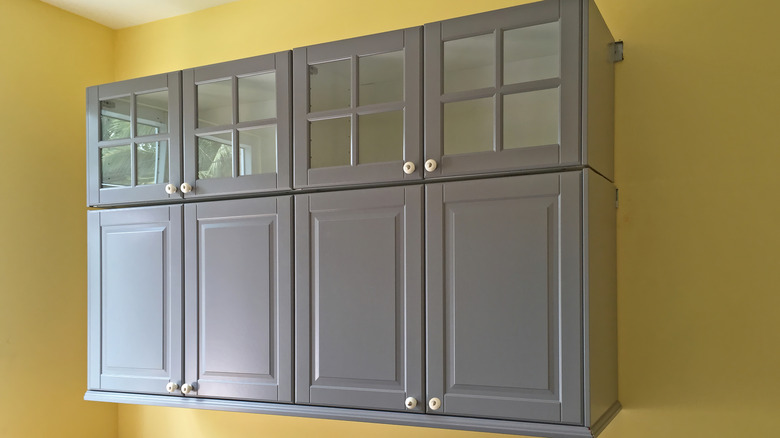Should You Wall Mount Or Floor Mount Your Free Standing Closet?
With the many size, configuration, and design options available, free-standing closets are a very flexible and practical storage alternative for the home. Compared to built-in or bespoke closets, free-standing closets do not take up much space, are much easier to install, and do not require modifying or renovating the area in which they will be placed. Additionally, because they are not permanently attached, they can be moved or transferred to another area of the house if needed. When considering whether to wall mount or floor mount a free-standing closet, it is best to check factors like available space, usage, and applicability of the mounting system to the intended area.
Unlike built-in closets that need to be designed to match the area or niche, a free-standing closet can be integrated into a space and is independent of the room's existing layout. This makes it easier to mount the free-standing closet to either the floor or the wall. The difference between the two installation methods is simply based on where and how they are attached.
A wall-mounted closet is suspended above the ground and attached to the wall with a steel rail via studs or bolts, while a floor-mounted closet is placed on the floor and attached to the wall with anchors or brackets. Both mounting options have distinct structural, storage, and aesthetic advantages and disadvantages but serve the same purpose. Wall and floor mounts are meant to secure the closet in place and provide support and stability to the weight of the free-standing closet.
Understand the advantages of each mounting option
The benefits of a floor-mounted closet begin with the ease of positioning it in a room, allowing for optimum space consumption. By being floor-mounted, closets can also have bigger cabinets, drawers, or shelves to accommodate large items like bed linens, bags, or luggage. Additionally, extra compartments (like affordable shelf dividers, side panels, and other budget-friendly closet organizing tools) can be added without much difficulty, allowing greater customization. More importantly, alongside increased storage capacity, floor-mounted closets are more durable and resilient because their weight rests directly on the flooring. Lastly, closets mounted on the floor have integrated hardware and give a sleek appearance, lending to the aesthetics of the room.
In terms of cost, wall-mounting a closet is cheaper because it requires less time and fewer materials to complete. Moreover, its installation may require less work than a floor mount because it doesn't involve removing carpets, molding, or other materials on the floor. This also minimizes the need to plan and design around vents, outlets, and other obstacles. Other advantages include flexibility in design and implementation because its height can be tailored to suit the need. This then maximizes vertical space and frees up floor space in a room, facilitating improved functionality and mobility in the area. With regards to cleaning and maintenance, because it is floating above the floor, a wall-mounted closet and the areas beneath it are easier to clean.
Which mounting option works best for your needs?
When choosing between wall-mounted and floor-mounted options, it is also vital to take the floor and wall layouts into account and be mindful of the installation requirements and weight restrictions. Floor-mounted is ideal for storing big objects that need a large and stable compartment to be put in, but floor-mounted closets are more likely to accumulate dirt and dust along the base in the long term. Furthermore, floor-mounted closets might need to be inspected more frequently for leaks or water damage, particularly in areas prone to becoming damp.
The wall-mounted option provides the appearance of more space, makes cleaning easier, and allows for height adjustability but is limited in the size and weight of what can be stored. Similar to other wall-mounted furniture, items kept in deeper or higher areas of the cabinets may be harder to reach, necessitating a ladder or step stool to access, which poses a safety concern. Worth noting as well is that, unlike floor-mounted closets, using the wall-mounted option requires proper installation to avoid the risk of property damage or personal harm.
Alternatively, another solution for mounting a closet is to use a hybrid of both wall-mounted and floor-mounted systems. This may seem more complicated, but by combining the advantages of each and decreasing their disadvantages, a hybrid setup could provide the optimal storage solution. If you need help with the mounting process, you can always consult these apps that help with tricky furniture assembly.


